How to Identify and Eliminate Bed Bugs at Home
Discovering small insects in your home can be unsettling, especially when they appear repeatedly in bedrooms or near resting areas. In many cases, these pests turn out to be bed bugs (Cimex lectularius)—tiny, reddish-brown insects that feed on human blood, primarily at night.
Bed bugs are not considered to transmit diseases, but their presence can cause itchy bites, allergic reactions, and disrupted sleep. Identifying them early and taking the right steps is essential to prevent a larger infestation.
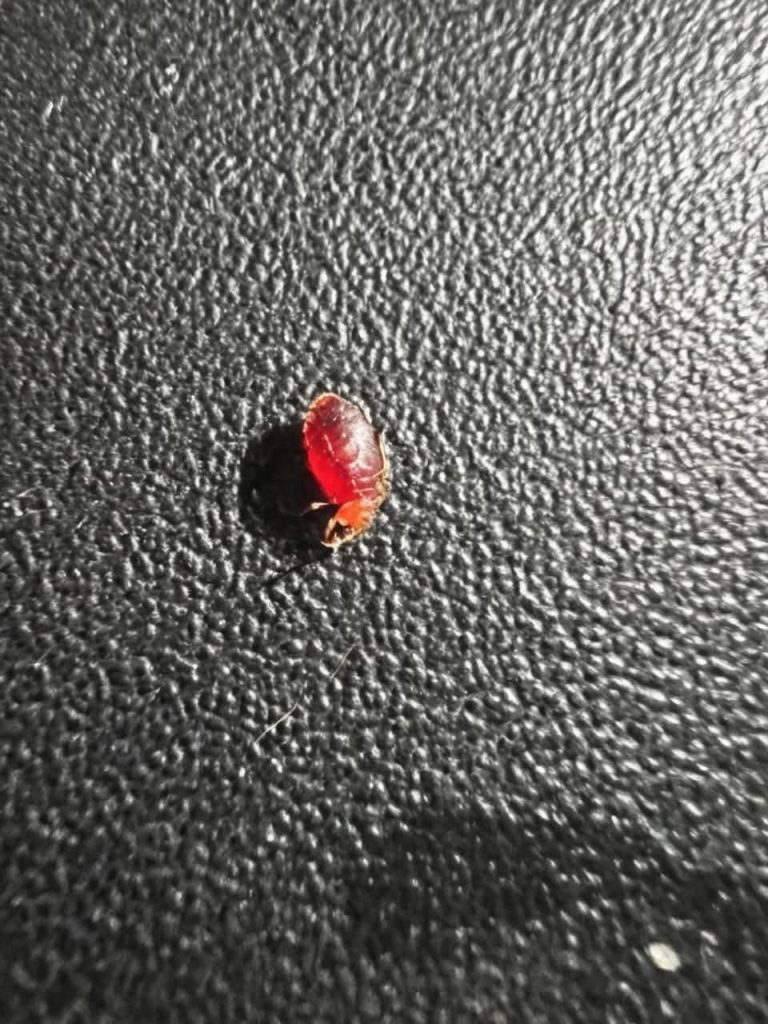
Recognizing Bed Bugs
Bed bugs are often mistaken for harmless household insects. Key signs include:
Appearance: Small, flat, oval-shaped insects, typically reddish-brown. After feeding, they may look darker and more swollen.
Hiding spots: Commonly found in mattress seams, bed frames, headboards, curtain folds, and even behind wall outlets or baseboards.
Evidence of activity: Tiny black spots (droppings), shed skins, eggs, or live insects.
Even a single sighting may indicate more hiding nearby, as bed bugs reproduce quickly.
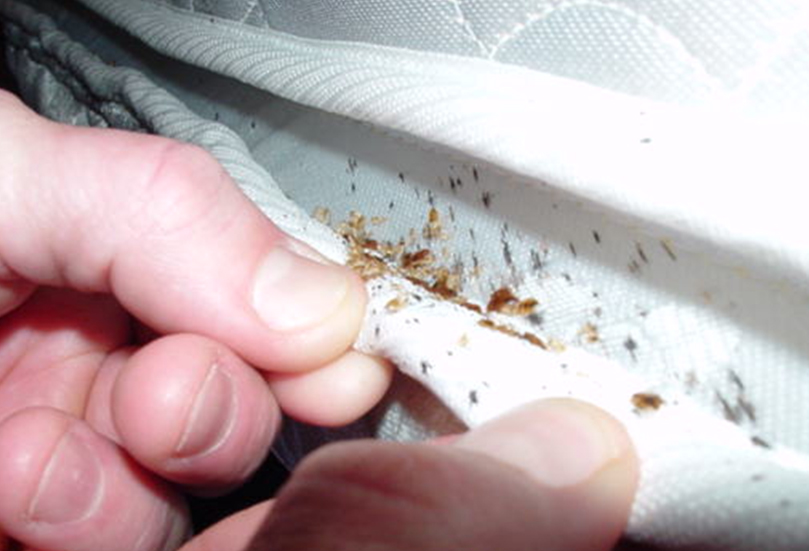
Why Prompt Action Is Important
Ignoring the problem can make it worse. Bed bugs can spread across rooms and apartments if left untreated. The main concerns include:
Bites: Red, itchy welts that may appear in clusters or lines.
Sleep disruption: Anxiety and discomfort from repeated bites.
Allergic reactions: Some people experience stronger skin reactions that may require medical attention.
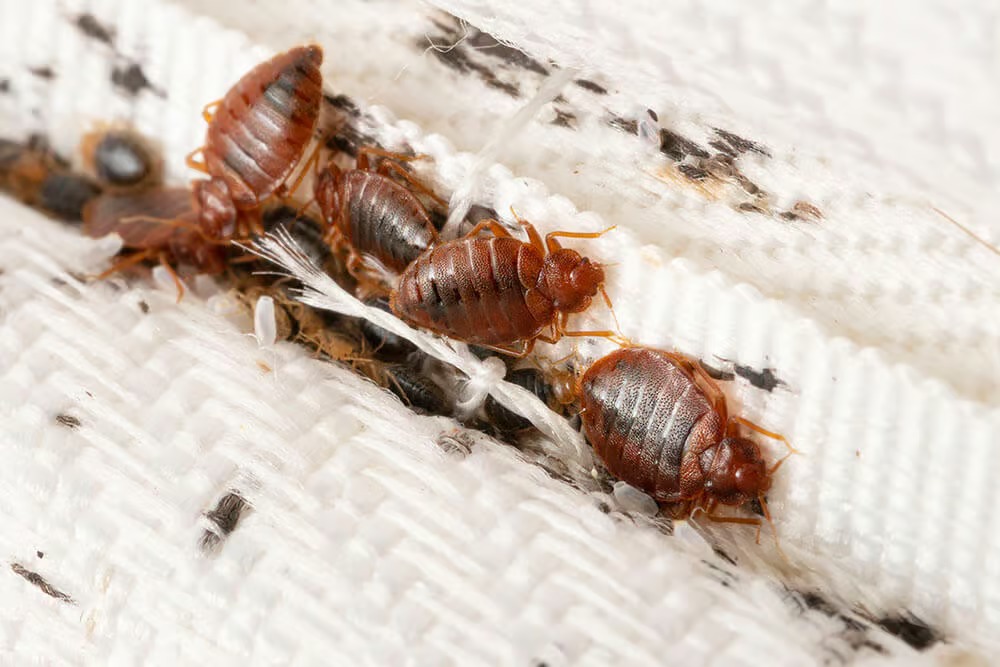
Steps to Control Bed Bugs at Home
If you suspect bed bugs, take immediate action:
Inspect thoroughly
Check mattress edges, sheets, bed frames, and nearby furniture for live bugs, droppings, or shed skins.
Wash and heat-treat fabrics
Wash bedding, clothing, and linens in hot water (at least 60°C) and dry on high heat to kill bed bugs and eggs.
Vacuum carefully
Vacuum mattresses, floors, and cracks in furniture. Dispose of the vacuum bag or empty the canister outside immediately.
Use bed bug interceptors
Place traps under bed legs to monitor and reduce movement of bugs.
Seek professional help
In most cases, professional pest control is the most effective way to eliminate infestations. Heat treatments and specialized pesticides are often required for full removal.
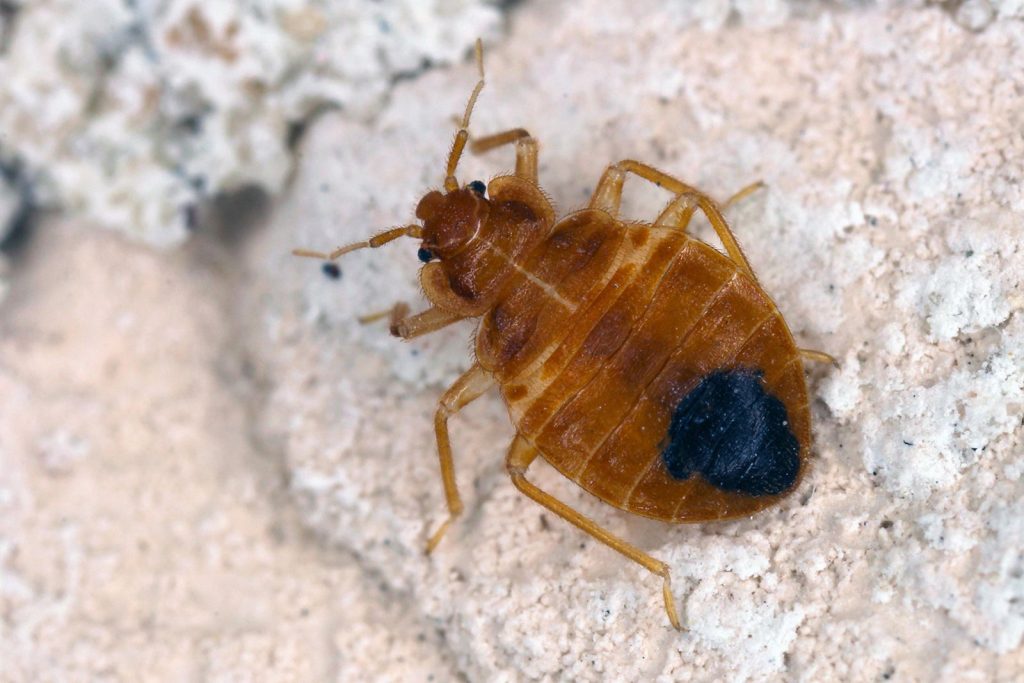
Common Mistakes to Avoid
Moving to another room: Bed bugs may follow and spread the infestation.
Throwing away furniture: Discarding mattresses or sofas without treatment can spread the problem to other areas.
Relying only on DIY sprays: Over-the-counter products are rarely effective for established infestations.
Conclusion
Finding bed bugs at home can be stressful, but early detection and proper treatment are the keys to solving the problem. By carefully inspecting sleeping areas, washing fabrics at high temperatures, vacuuming, and contacting a licensed pest control service, you can stop the infestation before it spreads further.
Regular home inspections and preventive steps, such as using mattress covers and keeping clutter to a minimum, can also reduce the risk of re-infestation.
Discovering small insects in your home can be unsettling, especially when they appear repeatedly in bedrooms or near resting areas. In many cases, these pests turn out to be bed bugs (Cimex lectularius)—tiny, reddish-brown insects that feed on human blood, primarily at night.
Bed bugs are not considered to transmit diseases, but their presence can cause itchy bites, allergic reactions, and disrupted sleep. Identifying them early and taking the right steps is essential to prevent a larger infestation.

Recognizing Bed Bugs
Bed bugs are often mistaken for harmless household insects. Key signs include:
Appearance: Small, flat, oval-shaped insects, typically reddish-brown. After feeding, they may look darker and more swollen.
Hiding spots: Commonly found in mattress seams, bed frames, headboards, curtain folds, and even behind wall outlets or baseboards.
Evidence of activity: Tiny black spots (droppings), shed skins, eggs, or live insects.
Even a single sighting may indicate more hiding nearby, as bed bugs reproduce quickly.

Why Prompt Action Is Important
Ignoring the problem can make it worse. Bed bugs can spread across rooms and apartments if left untreated. The main concerns include:
Bites: Red, itchy welts that may appear in clusters or lines.
Sleep disruption: Anxiety and discomfort from repeated bites.
Allergic reactions: Some people experience stronger skin reactions that may require medical attention.

Steps to Control Bed Bugs at Home
If you suspect bed bugs, take immediate action:
Inspect thoroughly
Check mattress edges, sheets, bed frames, and nearby furniture for live bugs, droppings, or shed skins.
Wash and heat-treat fabrics
Wash bedding, clothing, and linens in hot water (at least 60°C) and dry on high heat to kill bed bugs and eggs.
Vacuum carefully
Vacuum mattresses, floors, and cracks in furniture. Dispose of the vacuum bag or empty the canister outside immediately.
Use bed bug interceptors
Place traps under bed legs to monitor and reduce movement of bugs.
Seek professional help
In most cases, professional pest control is the most effective way to eliminate infestations. Heat treatments and specialized pesticides are often required for full removal.

Common Mistakes to Avoid
Moving to another room: Bed bugs may follow and spread the infestation.
Throwing away furniture: Discarding mattresses or sofas without treatment can spread the problem to other areas.
Relying only on DIY sprays: Over-the-counter products are rarely effective for established infestations.
Conclusion
Finding bed bugs at home can be stressful, but early detection and proper treatment are the keys to solving the problem. By carefully inspecting sleeping areas, washing fabrics at high temperatures, vacuuming, and contacting a licensed pest control service, you can stop the infestation before it spreads further.
Regular home inspections and preventive steps, such as using mattress covers and keeping clutter to a minimum, can also reduce the risk of re-infestation.
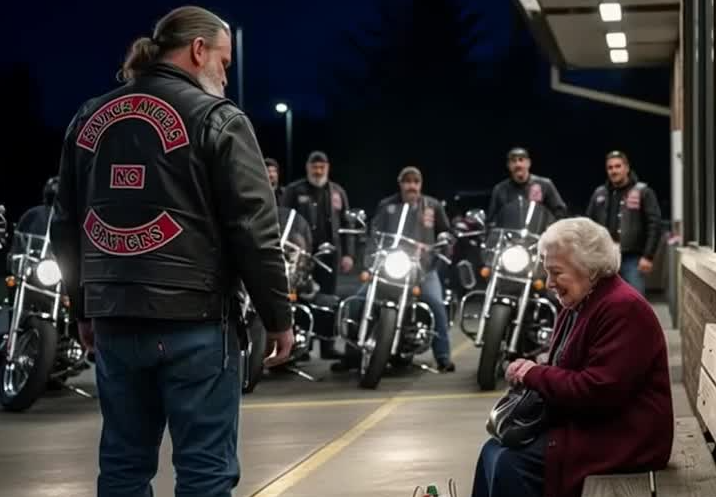
Margaret Carter never dreamed that the person she held dearest would turn their back on her. On a chilly winter afternoon, she believed she was simply running errands alongside her son, Paul. After assisting her out of the vehicle, he handed her a short grocery list and assured her he’d return soon. Margaret thought little of it—such moments were familiar.
Yet, when she emerged from the store with a few bags of necessities, Paul’s car was nowhere in sight. She settled on a nearby bench, waiting as minutes stretched into hours. The winter chill deepened, and she gripped her groceries tightly. When her phone finally hummed, a spark of hope warmed her—until she read the message: “Arranged a nursing home for you. They’ll come for you tomorrow.”
Tears clouded her eyes as the truth sank in: her only son had left her behind. At that moment, the rumble of motorcycles filled the parking lot, and a group wearing Savage Angels MC jackets pulled in. One, a gentle soul named Bear, knelt beside her and asked with care, “Ma’am, are you okay?” Upon learning her late husband had once aided him years before, Bear pledged to honor that kindness and look after her.
The Savage Angels welcomed Margaret into their fold, carrying her belongings back to her home and ensuring her safety. They nicknamed her “Queen Margaret,” bringing joy and warmth to her days. Though Paul never returned, she discovered a new family rooted in trust and devotion. Margaret came to understand that true family isn’t always bound by blood—it’s the people who stand by your side, unwavering.
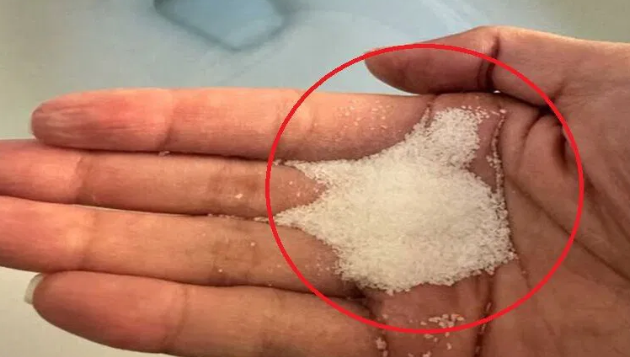
When plumbing challenges arise, many of us promptly reach out to a skilled plumber to resolve the issue. Plumbers bring a wealth of expertise and experience to the table, yet there are clever, lesser-known techniques they might not always reveal. One such method involves harnessing the power of salt to keep your toilet functioning smoothly. That’s right—ordinary salt! In this guide, we’ll delve into how this everyday household item can transform your toilet maintenance routine and why this approach might remain under wraps.
Why Salt Is a Game-Changer for Your Toilet
Keeping Clogs at Bay
Salt’s gritty texture works wonders in breaking down waste and toilet paper, preventing them from forming stubborn blockages. This is especially valuable for households prone to frequent toilet clogs. Incorporating salt into your routine maintenance can significantly reduce the risk of inconvenient backups.
Neutralizing Unpleasant Odors
Salt serves as a natural deodorizer, absorbing moisture that often fosters foul smells in the toilet. It also neutralizes odor-causing compounds, leaving your bathroom fresher. This benefit shines in spaces with limited ventilation, ensuring a more pleasant environment.
Tackling Mineral Deposits
Hard water can leave behind unsightly mineral buildup inside your toilet bowl. The abrasive quality of salt, when paired with a toilet brush, effectively scrubs away these deposits. Regular use keeps your toilet bowl sparkling clean and visually appealing.
Saving Money
Salt is an affordable solution for toilet upkeep, readily available in most homes. It offers a budget-friendly alternative to costly commercial cleaners, reducing reliance on expensive products and saving you money over time.
Eco-Friendly Maintenance
As a natural substance, salt is free of harsh chemicals, making it a sustainable choice for toilet care. By opting for salt, you minimize the use of chemical cleaners that could harm aquatic ecosystems when flushed, contributing to a greener planet.
Effortless Application
Using salt for toilet maintenance is simple and requires no specialized tools or expertise. The process is quick, making it an accessible option for keeping your toilet in excellent condition with minimal effort.
Proactive Care
Salt isn’t only for addressing existing problems—it’s a powerful preventive tool. Regularly incorporating salt into your toilet maintenance routine helps maintain optimal functionality, reducing the chances of unexpected plumbing issues.
Extending Toilet Lifespan
By preventing clogs and minimizing mineral buildup, salt can prolong the life of your toilet. A well-maintained toilet experiences less wear, potentially sparing you from expensive repairs or replacements down the line.
How to Use Salt for Toilet Care
Maintaining your toilet with salt is an easy, straightforward process. Follow these steps to get started:
Pour 1 cup of salt into the toilet bowl.
Let the salt sit for at least 15 minutes, or leave it overnight for enhanced results.
Scrub the bowl thoroughly with a toilet brush, focusing on areas with stains or buildup.
Flush the toilet to rinse away the salt and loosened debris.
Repeat this process every few weeks to maintain a clean, clog-free, and odor-free toilet.
Why This Salt Trick Stays a Secret
You may wonder why plumbers don’t widely share this effective salt technique. Several factors could explain their discretion:
Professional Demand: Plumbers rely on addressing plumbing issues for their livelihood, and sharing DIY methods like this might reduce the need for their services.
Complex Challenges: While salt is excellent for minor maintenance and clogs, it’s not a fix for intricate plumbing problems that demand professional expertise.
Risk Considerations: Plumbers may hesitate to recommend DIY solutions to avoid potential responsibility if the method is misapplied or leads to complications.
By incorporating salt into your toilet maintenance routine, you can enjoy a cleaner, fresher, and more efficient bathroom while saving money and supporting eco-friendly practices. Try this simple technique today and experience the difference it makes!

Live television carries a unique thrill — and an equally unique risk. Unlike pre-recorded shows, where mistakes can be edited out and scripts carefully managed, live broadcasts expose every slip, stumble, and unplanned reaction in real time. That unpredictability is part of what makes live TV exciting — but it also leaves even the most experienced professionals vulnerable to unforgettable mishaps.
A recent episode of the prime-time variety show Evening with the Stars perfectly illustrated this risk. Viewers quickly dubbed one segment “the most cringe-worthy live moment in TV history.” What was meant to be a dazzling highlight instead devolved into an awkward, painful-to-watch disaster that left both the studio audience and millions of home viewers wincing in secondhand embarrassment.
The Setup: A Surprise Gone Wrong
Evening with the Stars is a mainstay of prime-time television, blending celebrity interviews, live performances, and surprise guest appearances. Audiences tune in expecting excitement, charm, and seamless professionalism. On this particular evening, producers had planned a major reveal — a high-profile celebrity whose identity was kept secret to maximize anticipation. The goal: a jaw-dropping moment designed to dominate social media buzz.
The responsibility for introducing the guest fell to veteran host Dan Matthews. With over twenty years of experience, Matthews had navigated countless live mishaps gracefully. He had weathered technical glitches, awkward interviews, and unexpected interruptions. But that night, things didn’t go according to plan.
The Blunder
As the stage lights dimmed and suspenseful music swelled, Matthews began to build excitement. Cameras zoomed, the audience leaned forward, and the air was electric — until Matthews stumbled. He fumbled his lines, accidentally hinted at the surprise too early, and ultimately mispronounced the celebrity’s name in front of millions.
The reveal collapsed instantly. The celebrity tried to laugh it off, but the discomfort in the room was palpable. The studio audience reacted with a mix of awkward chuckles and stunned silence. Matthews attempted to recover with humor, but his effort only deepened the tension. Every uncomfortable second was captured in high definition, immortalizing the gaffe.
The Social Media Explosion
Within minutes, the moment went viral. Clips flooded Twitter, TikTok, Instagram, and Facebook. Hashtags like #CringeTV and #DanMatthewsFail began trending as viewers dissected the incident from every angle. Memes compared the intended glamorous reveal with the awkward reality, while reaction GIFs of stunned audiences circulated widely.
Some users mocked Matthews, while others sympathized, noting that anyone could falter under the immense pressure of live television. Within 24 hours, the clip had been viewed millions of times, picked up by news outlets, and analyzed by media critics. Some framed it as a cautionary tale of live TV’s inherent risks; others saw it as a lesson in the fragility of reputation in the digital age.
The Power and Peril of Live Television
Live TV has produced some of entertainment’s most iconic moments — from unplanned celebrity outbursts to unforgettable performances — as well as infamous blunders that become cultural touchpoints. Matthews’ incident underscored that no matter how experienced a host may be, the live format allows no margin for error. One misstep can overshadow an entire episode and, at times, define a career.
Yet these unscripted moments also draw audiences in. Viewers crave authenticity. Even uncomfortable scenes feel real — and real is compelling.
Audience Reactions: Divided Opinions
Reactions were mixed. Many criticized Matthews, arguing a host of his caliber should have been prepared. Others defended him, emphasizing that live TV is unpredictable. A third group admitted that, while awkward, the moment was entertaining — the kind of unscripted drama that keeps people watching.
What Happens Next?
Matthews has yet to comment publicly, leaving speculation about how he and the network will address the fallout. Some anticipate he will embrace the humor in future episodes, while others expect official statements or reassurances of continued professionalism. Regardless, the incident has already cemented itself in television history as both a cautionary tale and a testament to live TV’s captivating unpredictability.
Conclusion: Cringe, Chaos, and Cultural Memory
Ultimately, Evening with the Stars sought to deliver polished entertainment but instead created a memorable cringe moment. Whether viewed as a warning about the dangers of live broadcasting or simply a funny, awkward blip, the incident has sparked conversation about professionalism, audience expectations, and viral culture.
For Matthews, it may be a blemish on an otherwise stellar career. For viewers, it’s a reminder that live television — thrilling, unpredictable, and occasionally mortifying — will always have the power to surprise us. And sometimes, those surprises come not with glamour, but with awkward silence, nervous laughter, and secondhand embarrassment.
Just before dawn touched Southeast Asia, while most families were still lost in sleep, the earth reminded everyone of its unforgiving and unpredictable strength. A massive 7.7-magnitude earthquake struck along the China–Myanmar border, jolting entire towns awake and leaving behind devastation, terror, and uncertainty.
At first, it was only a faint rumble—something that might have been dismissed as a passing truck or distant thunder. But in mere seconds, it grew into violent shocks that rattled the ground and sent people racing barefoot into the streets, clutching their children and helping the elderly escape. The earth roared as if alive, tearing open roads, toppling buildings, and turning peaceful neighborhoods into scenes of chaos and ruin.
According to the U.S. Geological Survey, the quake’s epicenter lay only 10 kilometers beneath the surface—shallow enough to maximize destruction. Its force rippled outward, shaking southern China, northern Thailand, and Myanmar. In Thailand’s Chiang Mai and Chiang Rai, terrified residents felt walls crack and buildings sway, fleeing to open spaces in panic. From large cities to remote villages, the quake spared almost no one.
The aftermath was heartbreaking. Rubble choked streets, cars lay crushed beneath collapsed structures, and hospitals overflowed with the injured. Survivors arrived with broken bones, deep wounds, and dazed expressions, overwhelming medical staff who struggled to keep pace. Early reports confirmed dozens of lives lost, but rescuers feared the toll would climb as teams dug through the wreckage searching for survivors.
Rescue operations were slowed by fractured roads, blocked access routes, and widespread blackouts that plunged entire towns into darkness. Communication lines faltered, leaving families desperate for news of loved ones. Every passing hour weighed heavily, as those trapped beneath collapsed homes clung to life, racing against time, injuries, and relentless aftershocks.
Yet amid the destruction, acts of courage and compassion emerged. Volunteers clawed at debris with bare hands, refusing to give up on strangers. Families opened their doors to the displaced, and doctors worked tirelessly in tents lit only by flashlights. These small but powerful gestures of solidarity offered glimpses of hope in the middle of despair.
International responses soon followed. Relief organizations mobilized to deliver food, water, shelter, and medical aid. Governments expressed condolences and pledged support, though coordination remained difficult in areas where officials still struggled to measure the full scale of destruction. Humanitarian experts stressed that the coming days would determine how many more lives could be saved.
Beyond physical loss, the human toll was immense. Families were torn apart, children separated from parents, and entire communities stripped of their homes, schools, and security. Survivors carried not only injuries but also the trauma of a night when the ground itself turned against them. Every aftershock deepened the fear, a painful reminder that safety was still uncertain.
Authorities warned of continued aftershocks, some potentially as dangerous as the initial quake. Residents were urged to avoid unstable structures and remain in open areas, but many had no choice, struggling with shortages of shelter, food, and clean water. The tension of survival mixed with dread of what might come next.
Disasters like this expose the vulnerability of earthquake-prone regions, where limited infrastructure and emergency resources make recovery even harder. Experts now stress that rebuilding must go beyond clearing rubble: stronger housing, better education on disaster preparedness, and faster emergency systems will be crucial to preventing such tragedies in the future.
For now, however, survival is the only focus. Each voice heard under rubble represents a fragile chance at life. Each successful rescue pushes back against despair. And every simple act of kindness—a blanket shared, a warm meal given, a hand held—becomes proof that humanity endures even in the darkest hours.
The 7.7-magnitude earthquake along the China–Myanmar border will be remembered as one of the region’s most destructive disasters in decades. But beyond numbers and statistics, it is the stories of courage, pain, and resilience that will define this moment. And as the world watches, there is one hope—that compassion and strength will shine brighter than the destruction left behind.
At first, it was only a faint rumble—something that might have been dismissed as a passing truck or distant thunder. But in mere seconds, it grew into violent shocks that rattled the ground and sent people racing barefoot into the streets, clutching their children and helping the elderly escape. The earth roared as if alive, tearing open roads, toppling buildings, and turning peaceful neighborhoods into scenes of chaos and ruin.
According to the U.S. Geological Survey, the quake’s epicenter lay only 10 kilometers beneath the surface—shallow enough to maximize destruction. Its force rippled outward, shaking southern China, northern Thailand, and Myanmar. In Thailand’s Chiang Mai and Chiang Rai, terrified residents felt walls crack and buildings sway, fleeing to open spaces in panic. From large cities to remote villages, the quake spared almost no one.
The aftermath was heartbreaking. Rubble choked streets, cars lay crushed beneath collapsed structures, and hospitals overflowed with the injured. Survivors arrived with broken bones, deep wounds, and dazed expressions, overwhelming medical staff who struggled to keep pace. Early reports confirmed dozens of lives lost, but rescuers feared the toll would climb as teams dug through the wreckage searching for survivors.
Rescue operations were slowed by fractured roads, blocked access routes, and widespread blackouts that plunged entire towns into darkness. Communication lines faltered, leaving families desperate for news of loved ones. Every passing hour weighed heavily, as those trapped beneath collapsed homes clung to life, racing against time, injuries, and relentless aftershocks.
Yet amid the destruction, acts of courage and compassion emerged. Volunteers clawed at debris with bare hands, refusing to give up on strangers. Families opened their doors to the displaced, and doctors worked tirelessly in tents lit only by flashlights. These small but powerful gestures of solidarity offered glimpses of hope in the middle of despair.
International responses soon followed. Relief organizations mobilized to deliver food, water, shelter, and medical aid. Governments expressed condolences and pledged support, though coordination remained difficult in areas where officials still struggled to measure the full scale of destruction. Humanitarian experts stressed that the coming days would determine how many more lives could be saved.
Beyond physical loss, the human toll was immense. Families were torn apart, children separated from parents, and entire communities stripped of their homes, schools, and security. Survivors carried not only injuries but also the trauma of a night when the ground itself turned against them. Every aftershock deepened the fear, a painful reminder that safety was still uncertain.
Authorities warned of continued aftershocks, some potentially as dangerous as the initial quake. Residents were urged to avoid unstable structures and remain in open areas, but many had no choice, struggling with shortages of shelter, food, and clean water. The tension of survival mixed with dread of what might come next.
Disasters like this expose the vulnerability of earthquake-prone regions, where limited infrastructure and emergency resources make recovery even harder. Experts now stress that rebuilding must go beyond clearing rubble: stronger housing, better education on disaster preparedness, and faster emergency systems will be crucial to preventing such tragedies in the future.
For now, however, survival is the only focus. Each voice heard under rubble represents a fragile chance at life. Each successful rescue pushes back against despair. And every simple act of kindness—a blanket shared, a warm meal given, a hand held—becomes proof that humanity endures even in the darkest hours.
The 7.7-magnitude earthquake along the China–Myanmar border will be remembered as one of the region’s most destructive disasters in decades. But beyond numbers and statistics, it is the stories of courage, pain, and resilience that will define this moment. And as the world watches, there is one hope—that compassion and strength will shine brighter than the destruction left behind.

Three years ago, a story broke that left the world stunned, inspired, and deeply curious. It wasn’t a political scandal or a celebrity revelation—it was the story of conjoined twins who made a choice that defied every cultural, emotional, and legal expectation placed upon them: they married the same man.
Fast-forward to the present day, and the same family is once again making headlines—not for controversy, but for the undeniable beauty and resilience of their shared life. Recent photos of the twins, their husband, and their daughter have reignited public fascination and admiration. But behind the viral images lies a narrative of human complexity, quiet strength, and love that challenges everything we think we know about relationships, identity, and the human experience.
This is not just a viral curiosity. It’s a story about redefining family, individuality, and connection in the most unexpected way.
Who Are They?
The twins in question—whose names have been carefully protected in certain media outlets for privacy—were born with a rare medical condition known as thoracopagus conjoinment, meaning they share a torso and several vital organs. Each twin controls one side of their shared body, yet they function with distinct brains, thoughts, emotions, and desires.
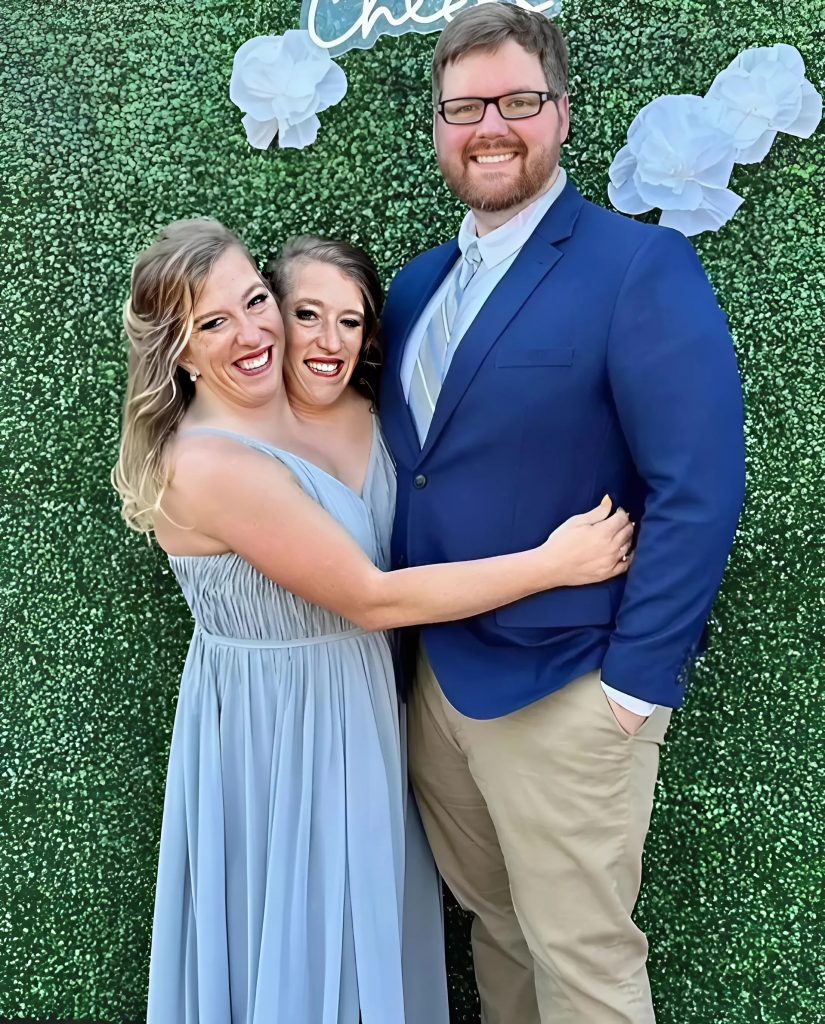
From early on, they defied expectations. Doctors predicted they would not live beyond infancy. But they not only survived—they thrived, navigating life as two people within one body. Their childhood was full of challenges, from basic physical coordination to managing society’s stares, questions, and judgments. But through it all, they remained determined to lead a full, independent life.
They attended school, graduated college, and eventually chose a career path in teaching. In their public appearances, they emphasized that despite sharing a body, they are two separate individuals with separate minds, capable of making their own decisions, including those about love.
One Man, Two Hearts: How Their Love Story Began
Their relationship with their now-husband began quietly. A family friend introduced him, and over time, a genuine friendship turned into a deeper emotional connection. What makes their story so striking is not just the physical reality of their conjoinment, but how all three individuals—each with their own perspective—navigated this emotional landscape with honesty, consent, and mutual respect.
Critics called it unnatural. Comment sections exploded with questions, ridicule, and even anger. But for the trio involved, the situation was clear:
“We love each other. That’s real. That’s enough.”
After years of building a relationship, they made it official. In a small ceremony surrounded by close family and friends, the twins married their partner, sealing a bond that continues to defy convention and expectations.
Family Life: The Arrival of Their Daughter
Earlier this year, the twins shared another chapter of their remarkable journey: the birth of their daughter.
While specifics of the pregnancy have been kept private to protect their child and the family’s well-being, it is known that the twins successfully carried and gave birth to a healthy baby girl. Their decision to start a family was not made lightly. It involved medical consultations, psychological preparation, and deep conversations between all three partners.
The recent photos they shared depict a family that appears joyful, grounded, and at peace with its uniqueness. The daughter, smiling between her mothers and father, seems blissfully unaware of the cultural weight resting on her tiny shoulders. For her, this is just her family—nothing more, nothing less.
Public Reaction: Fascination, Discomfort, and Learning
The public’s reaction has once again been a mix of amazement, judgment, and support. While many applaud the family for breaking barriers and living authentically, others still struggle to accept the situation. Some ask invasive questions. Others accuse them of attention-seeking. But the family rarely engages with negativity.
They have one answer to it all:
“We are not here to fit into your idea of normal. We are here to live our lives.”
And they do. They continue working, raising their daughter, and advocating for greater awareness and sensitivity around disability, identity, and relationships.
Legal and Ethical Questions
Their marriage also reopened complicated questions about legal recognition of marriages involving conjoined twins. Since they are biologically two individuals, but legally often recognized as one entity due to shared documentation, how does a court recognize such a marriage?
In their case, local authorities chose to honor their individual autonomy. They were both of legal age, mentally competent, and had fully consented. These are the only criteria that mattered in the eyes of the law—and, arguably, should be the only ones that matt.

In the final episode of the beloved soap opera LEGEND: LOST, we said farewell to the late Bill Hayes, marking the end of an era that touched millions.
Bill, who lived a remarkable life until the age of 98, shared a touching moment with his on-screen and off-screen wife, Susan Seaforth Hayes, in a poignant scene. This moment served as a bittersweet reminder of the incredible impact he had on our screens for over 50 years.Bill Hayes, a cherished performer, was found deceased at his California home. His journey as an icon in the soap opera world began when he first appeared as Doug Williams on Days of Our Lives in 1970. He quickly won the hearts of fans across the nation, leaving an indelible mark on the show’s history.
Whether earning two Daytime Emmy Award nominations or portraying a prisoner with a hidden musical talent, Bill’s presence was unforgettable. Although his regular tenure on the show ended in 1984, Bill made several memorable returns over the years, much to the delight of his devoted viewers.
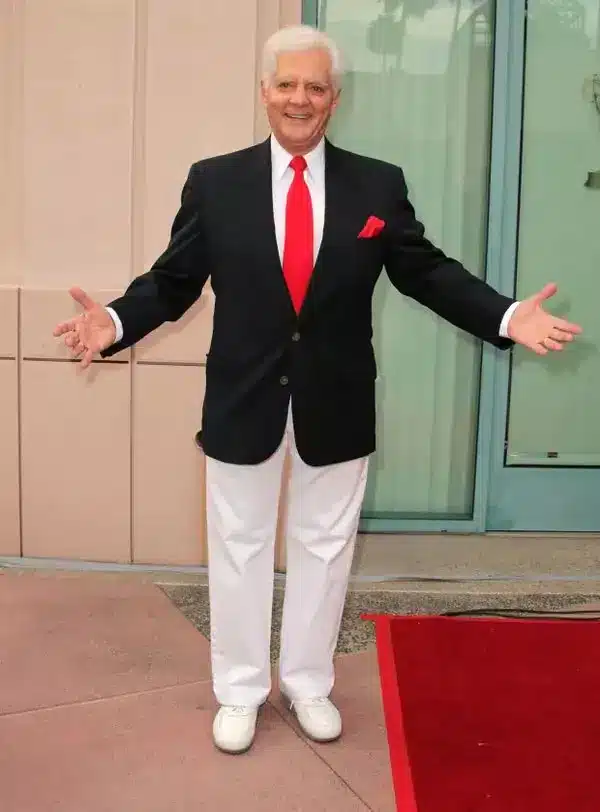
Bill’s life, both on and off screen, was deeply intertwined with that of his beloved wife, Susan Seaforth Hayes. The couple married in October 1974, becoming television’s first “super-couple.” Their joint appearance on the cover of Time Magazine solidified their status as icons in the soap opera industry.
Beyond Days of Our Lives, the couple also appeared in other popular soap operas and co-authored their biography, Like Sands Through the Hourglass, published in 2005.On Thursday, July 11, 2024, viewers witnessed an emotional scene as Bill made his final appearance on Days of Our Lives.
In this moment, Susan, who portrayed his wife both on and off the screen, reflected on their incredible life together and the depth of their love. The warmth and authenticity of the scene showcased the undeniable chemistry that made Bill and Susan a legendary on-screen duo.
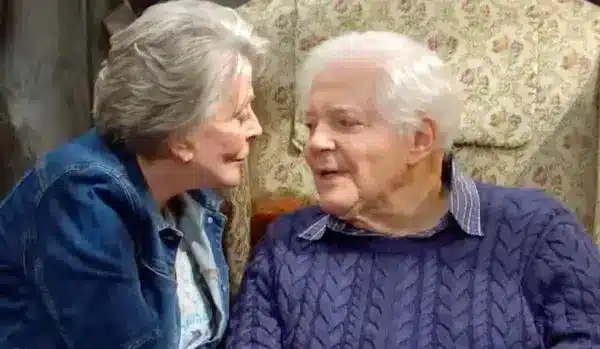
Although Bill’s final scenes have aired, his character, Doug, will forever hold a special place in the hearts of his fans. In December 2024, the fictional town of Salem, the setting of the show, will honor his character, serving as a testament to Bill’s lasting influence.
Though Bill Hayes is no longer with us, his legacy continues through the unforgettable moments he brought to life on screen. Fans around the world, who considered Bill a part of their extended family, continue to celebrate his kindness, love, and vitality.

A girl called the police and said her father was under the floor: when the officers started removing the floorboards, they found something terrible
A strange and alarming call came into the local police station.
“Hello…” sobbed a thin voice of a girl about eight years old. “Please help… my dad is under the floor…”
The duty officer frowned and exchanged glances with his colleague.
“Under the floor? Girl, can you pass the phone to your mom or dad?”
“Dad hasn’t been home for days. And mom doesn’t believe me, she says I’m making it up. But I know he’s under the floor. He told me himself.”

“Wait…,” said the man, adopting a more serious tone. “How did he tell you if he’s not home?”
“I saw him in a dream,” whispered the girl. “He said he went far away… and is lying under the floor…”
At first, the police laughed, thinking the child had psychological problems and were about to pass the case to social services. But something in her voice — her desperate sincerity — made them take the call seriously.
“We’ll check just in case,” said one of the officers. “What if it’s true…”
When they arrived at the address, they were greeted by the girl’s mother — a neat, slightly nervous woman of about forty. She was surprised by the visit but let them in. The girl stood silently beside her, clutching her teddy bear tightly, and pointed to a spot by the living room wall. Right under the new laminate flooring.
“Where is your husband?” the police first asked.
“On a business trip,” the woman answered quickly. “In another city… I think in… Serbia. Or Slovenia. I don’t remember exactly. He travels a lot.”
“Can you call him?”
“His phone is dead,” she stammered. “Probably…”

While one officer tried unsuccessfully to reach the husband, another questioned the neighbors. No one had seen the man for over a week.
He hadn’t gone to work or contacted anyone. No airline had any flights registered under his name.
When the police said they wanted to open part of the floor, the mother became nervous.
“We just finished renovating! Do you know how much it cost? Who will pay for the damage?!”
“If we find nothing, the insurance will cover everything,” the senior officer answered dryly.
They began removing the boards at the spot the girl pointed to.
After a few minutes, a scream was heard. One officer jumped back sharply, dropping his crowbar. In the silence, like thunder from a clear sky, it was heard:
“We found… a body.”
Under the floor, they extracted a man’s body. Wrapped in construction plastic, partially covered with expanding foam and concrete. Almost no signs of struggle. Apparently, he died from a single strong blow to the temple.
Later, the examination confirmed everything. During an argument, the woman struck her husband with a heavy object. Realizing he was dead, she decided to hide the crime, taking advantage of the renovation work in the house.

The workers thought she just asked to “fill the floor a bit deeper.” No one suspected anything.
And the girl… The girl really saw her father in a dream. He came to her, smiled sadly, and said:
“Tell them. I am under the floor. I am close. Don’t be afraid.”
And she told.
I installed a camera in my son’s room, and I got scared when I saw a strange movement😯
One of the most important responsibilities as a parent is to make sure your child is safe, especially when they’re sleeping.
That’s why more and more parents choose to install surveillance cameras in their children’s rooms. However, what seems like a prudent precaution can sometimes lead to unexpected and unsettling situations.
This is exactly what happened to me recently when I installed a camera in my son’s room and discovered a strange movement in the room. An incident as surprising as it was disturbing, which caused a mix of anxiety and curiosity in me.
Everything was fine at first. I was monitoring the room via the app on my phone, feeling reassured that I could check on his well-being without disturbing his sleep. But one night, as I took a quick look at the camera, I noticed a strange movement in the room.
At first, I thought it was just a simple reflection or a play of light. But the longer I looked, the more the shadow seemed to move on its own, as if it were alive. 😯 My heart started racing. This wasn’t an optical illusion, it was too real, too strange.
What I saw made my blood run cold. 😯 If I hadn’t installed this camera, we could have been facing real danger without even knowing it…

I checked the camera several times, thinking that maybe a simple shift in the image had caused the appearance of movement.
But no, each time, the shadow seemed to move in a disturbing way, as if something or someone was in the room with my son.
Heart pounding, I rushed into the room to see what was happening. Nothing. No strange presence, no sign of what I had seen through the camera.
I stayed in the room for a long time, searching for a logical explanation, but there was nothing unusual.

Yet, the unease persisted. After reviewing the videos several times, I couldn’t help but wonder if I had just imagined the whole thing. But the anxiety was too strong to ignore this feeling.
A few days later, the worry hadn’t disappeared. The thought of an invisible presence in my son’s room haunted me. So, I decided to rearrange his room.
I changed the position of the bed and moved objects that could have caused optical illusions. Once the room was reorganized, a weight seemed to lift. The camera no longer captured that strange movement, and I finally felt at peace.
One of the most important responsibilities as a parent is to make sure your child is safe, especially when they’re sleeping.
That’s why more and more parents choose to install surveillance cameras in their children’s rooms. However, what seems like a prudent precaution can sometimes lead to unexpected and unsettling situations.
This is exactly what happened to me recently when I installed a camera in my son’s room and discovered a strange movement in the room. An incident as surprising as it was disturbing, which caused a mix of anxiety and curiosity in me.
Everything was fine at first. I was monitoring the room via the app on my phone, feeling reassured that I could check on his well-being without disturbing his sleep. But one night, as I took a quick look at the camera, I noticed a strange movement in the room.
At first, I thought it was just a simple reflection or a play of light. But the longer I looked, the more the shadow seemed to move on its own, as if it were alive. 😯 My heart started racing. This wasn’t an optical illusion, it was too real, too strange.
What I saw made my blood run cold. 😯 If I hadn’t installed this camera, we could have been facing real danger without even knowing it…

I checked the camera several times, thinking that maybe a simple shift in the image had caused the appearance of movement.
But no, each time, the shadow seemed to move in a disturbing way, as if something or someone was in the room with my son.
Heart pounding, I rushed into the room to see what was happening. Nothing. No strange presence, no sign of what I had seen through the camera.
I stayed in the room for a long time, searching for a logical explanation, but there was nothing unusual.

Yet, the unease persisted. After reviewing the videos several times, I couldn’t help but wonder if I had just imagined the whole thing. But the anxiety was too strong to ignore this feeling.
A few days later, the worry hadn’t disappeared. The thought of an invisible presence in my son’s room haunted me. So, I decided to rearrange his room.
I changed the position of the bed and moved objects that could have caused optical illusions. Once the room was reorganized, a weight seemed to lift. The camera no longer captured that strange movement, and I finally felt at peace.
The similarities between the human brain and that of the dog explain the multimillennial friendship between these two species!
Humans and dogs have shared their existence for over 30,000 years, and scientists have learned one of the explanations for this good understanding between the two species: amazing similarities have been discovered between human and dog brains.
Dogs respond to emotions betrayed by the voice in the same way as humans: both dogs and humans have certain similar brain areas for this process, research shows.
This is how this video is explained, which shows the incredible relationship between a little girl and several German shepherds. The child is having a great time with the 14 dogs, and the video makes a sensation on the internet.

Although there is a perception that these dogs behave aggressively and can be dangerous when they are around children, the video gives us a completely different perspective.
Returning to the study, the results of the study suggest that dogs’ affection for humans is beyond their interest in food; that dogs love us for the same reasons other people love us – things like social comfort or social connections.
Previous research by American scientists at Emory University in Atlanta, USA, has shown that a portion of the brain associated with positive emotions is similar in dogs and humans.
In fact, this research confirms what dog lovers have always known, intuitively: that their canine friends perceive love and affection.
Humans and dogs have shared their existence for over 30,000 years, and scientists have learned one of the explanations for this good understanding between the two species: amazing similarities have been discovered between human and dog brains.
Dogs respond to emotions betrayed by the voice in the same way as humans: both dogs and humans have certain similar brain areas for this process, research shows.
This is how this video is explained, which shows the incredible relationship between a little girl and several German shepherds. The child is having a great time with the 14 dogs, and the video makes a sensation on the internet.

Although there is a perception that these dogs behave aggressively and can be dangerous when they are around children, the video gives us a completely different perspective.
Returning to the study, the results of the study suggest that dogs’ affection for humans is beyond their interest in food; that dogs love us for the same reasons other people love us – things like social comfort or social connections.
Previous research by American scientists at Emory University in Atlanta, USA, has shown that a portion of the brain associated with positive emotions is similar in dogs and humans.
In fact, this research confirms what dog lovers have always known, intuitively: that their canine friends perceive love and affection.
 Top Video Viral
Top Video Viral








